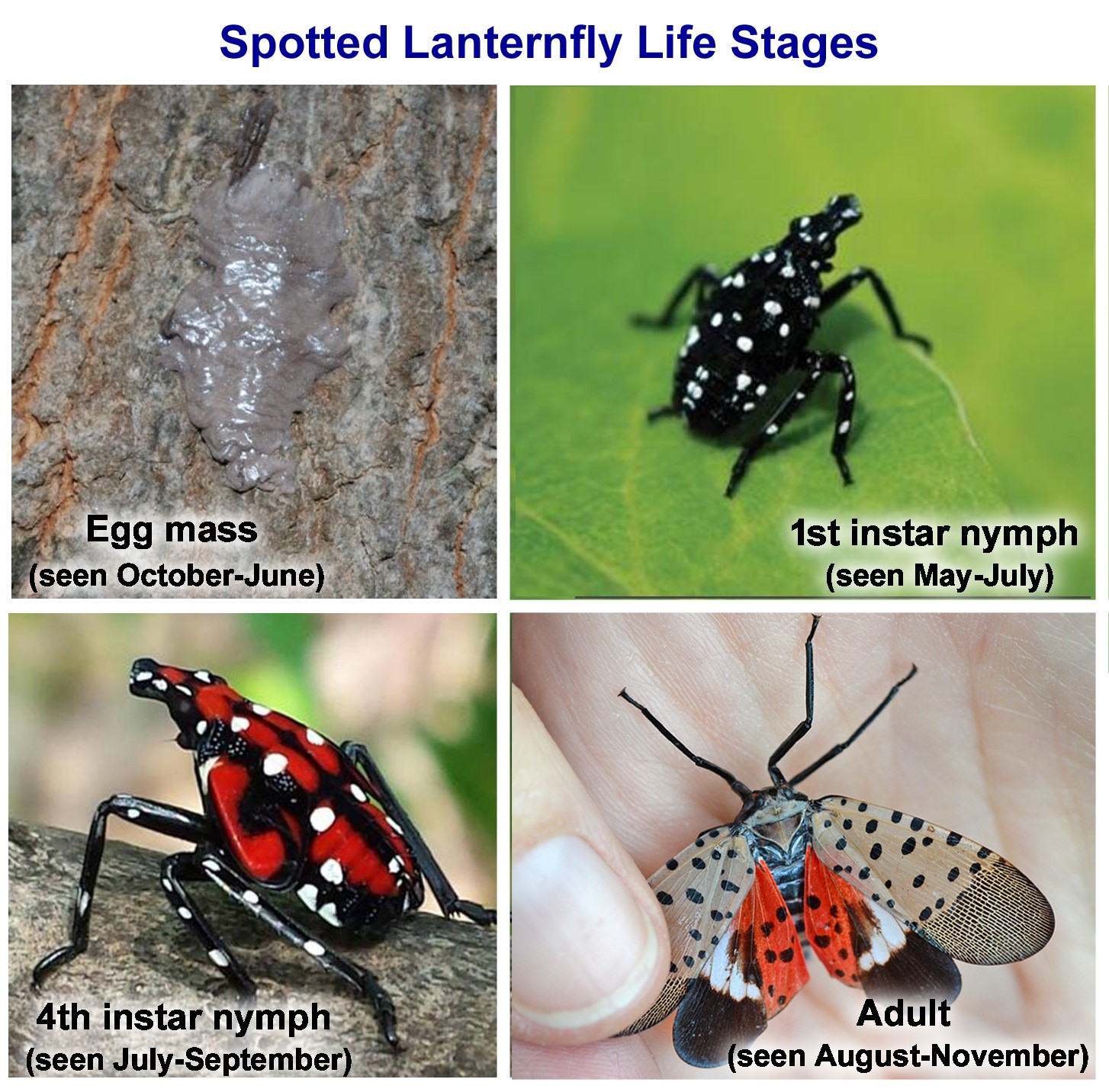Iowa Department of Agriculture and Land Stewardship Urges Iowans to be on the Lookout for Spotted Lanternflies
Colorful but invasive and destructive insect has been confirmed in Iowa
DES MOINES, Iowa (July 26, 2022) – The Iowa Department of Agriculture and Land Stewardship asks Iowans to be on the lookout for spotted lanternfly insects. The colorful but invasive and destructive insect is native to China, India, and Vietnam, and was accidentally introduced into Pennsylvania in 2014. It has since been confirmed in eleven states and often spreads by the movement of infested material or items containing spotted lanternfly egg masses. If allowed to spread further in the United States, this pest could seriously impact the country’s grape, orchard, nursery, and logging industries.
A community member notified the Iowa Department of Agriculture and Land Stewardship of the presence of two immature spotted lanternflies in Dallas County earlier this month. Federal identification confirmed the sample as a spotted lanternfly. Surveys of the immediate area have not resulted in signs of an ongoing infestation and entomologists hope the insects recently hitchhiked into the area.
“Spotted lanternfly nymphs and adults are colorful, and if you spot one, please report it to the Iowa Department of Agriculture and Land Stewardship right away. We appreciate this community member letting us know about its presence in our state and we hope other Iowans will keep an eye out as we want to contain the spread of this destructive pest,” said State Entomologist Robin Pruisner. “At this time of year, we expect to find the eye-catching nymphs, which can be black and white, or red, black, and white. It is ironic is that this invasive insect prefers to feed on the tree-of-heaven, another invasive species.”
Spotted lanternfly adults and nymphs frequently gather in large numbers on host plants. They are easiest to spot at dusk or at night as they migrate up and down the trunk of the plant. During the day, they tend to cluster near the base of the plant if there is adequate cover or in the canopy, making them more difficult to see.
It feeds on a wide range of fruit, ornamental, and woody trees, with tree-of-heaven being one of the preferred hosts. Plants preferred include grapes and hops, and the following trees: almond, apple, apricot, cherry, maple, nectarine, oak, peach, pine, plum, poplar, sycamore, tree-of-heaven, walnut, and willow. Infested plants may ooze or weep and have a fermented odor. A buildup of sticky honeydew on plants or the ground underneath the plants may be present. A sooty mold may also occur on infested plants and fruit. The sucking of sap from plants can reduce the products of photosynthesis, thereby weakening the plant and eventually contributing to the plant’s death.
If you think you have found a spotted lanternfly, please call the Entomology and Plant Science Bureau at 515-725-1470 or e-mail Entomology@IowaAgriculture.gov. You may also contact your local county Iowa State University Extension Office.
